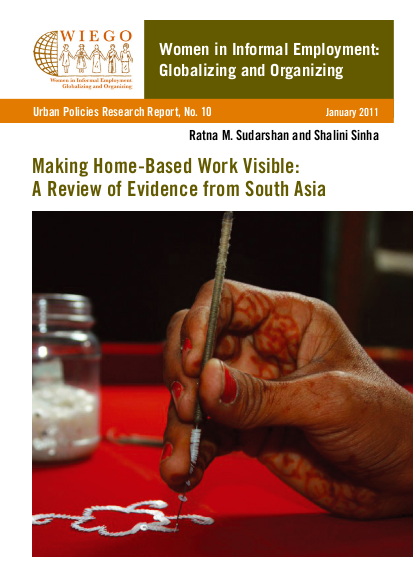
Home-based work has a long history in South Asia, having evolved out of home-based craft production. Capitalist production has found outsourcing to home-based workers (HBWs) a stable and profitable mode of production. Workers, especially women workers, have found home-based work is a way of combining work and care responsibilities with least strain on family and community norms and expectations. Data shows that roughly half of all women workers are home-based in the region; and the trends suggest that home-based work is on the increase, and found in both old and new industries.
The ILO Convention passed in 1996 gave a great boost to the efforts of activists to gain recognition for HBW as “workers.” However the precise definition of HBW continues to be the subject of debate, ranging from the narrower definition of home workers as contracted workers to wider definitions that would include selfemployed and unpaid family workers. The definition is the basis for statistical data collection which in turn helps to shape policy and determine the resources required to give shape to the policy. Given the paucity of macro data, several innovative methods have been used by researchers to illustrate the conditions of work of HBW and identify priorities for action. These include value chain analysis, which is a useful way of depicting the link between low paying home-based work and the often high-price of the resulting products on the international market; however, this has the limitation of being exclusively focused on the market, with little attention given to the local economy.
Resource collections
- Accountability to affected populations (AAP)
- Topics
- UN Habitat - Urban Response Collection
- Urban Response - Urban Crisis Preparedness and Risk Reduction
- Urban Response Collection - Community Engagement and Social Cohesion
- Urban Response Collection - Economic Recovery
- Urban Response Collection - Environment and Climate Change
- Urban Response Collection - Housing, Land and Property
- Urban Response Collection - Urban Crisis Response, Recovery and Reconstruction
- Urban Response Collection - Urban Resilience